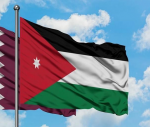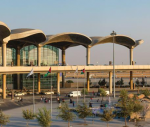You are here
Israel's preparations for a future showdown with Iran
Oct 27,2024 - Last updated at Oct 27,2024
Israel’s response to Iran was calculated and in line with US preferences, targeting military sites without sparking significant regional repercussions on security, civilian life, or the economy. This restrained approach puts Iran face-to-face with the United States: Israel’s limited operation signals that Washington is now the direct guarantor against any potential Iranian retaliation, making it clear that any response would be handled by the US. This tactic serves to narrow Iran’s response options, a scenario that Iran may prefer to avoid, given it could lead to a direct confrontation with Israel and its allies.
This strike, however, establishes important future strategic points for Israel, notably breaching Iranian airspace and demonstrating the Israeli air force’s capacity to reach Iran for long-range strikes, either through aircraft or precision missiles that are hard to intercept. While this action aligns with US preferences in appearance, it practically pushes through a significant barrier for Israel in its deterrence strategy against Iran, an individual, direct approach. Today, target selection might align with the current Democratic Party administration’s desires, but Israel’s growing confidence in its ability to reach Iran’s interior could complicate this dynamic in the future.
The other key aspect is the targeting of Iranian military sites and air defence capabilities, intended to turn Iranian airspace into an exposed zone where Israeli operations can proceed as needed. This operational framework is Israel’s preferred strategy for shaping its future engagement with Iran. Although Israel, currently preoccupied with securing its borders from Gaza to the West Bank, Syria and Lebanon, may not currently seek an outright confrontation with Iran, it is certainly focused on targeting Iran’s Revolutionary Guard Corps (IRGC). This prioritisation explains Israel’s selective strikes on the IRGC rather than on Iran’s infrastructure or energy installations.
In the ongoing confrontation with the IRGC, Israel could soon turn its sights to operating within Iranian territory itself. The penetration of Iranian airspace might be accompanied by a shift to non-traditional ground operations. This suggests an increased likelihood of specialised, intelligence-led operations, including cyber campaigns, aimed at inflicting damage inside Iran and fostering instability. Such internal disruptions could, in turn, be leveraged by moderate Iranian factions against the hardliners dominating the country’s foreign policy.
Israel’s recent strike on Iran cannot be viewed solely as a direct confrontation with Iran but also as a gesture toward the US Democratic Party administration at a sensitive time just before the presidential elections. As a result, the US may feel compelled to reciprocate Israel’s calibrated response, which possibly helped prevent a larger-scale conflict during the Democrats’ tenure. Through this Israeli response, Washington has positioned itself to contain any Iranian retaliation, although it may lack the same control over Israeli actions in active fronts such as Syria, Lebanon and Iraq, which are now central to Israel’s strategic concerns.
Given the timing, Israel may see an opportunity to intensify pressure on these fronts, signalling a potential escalation with Hizbollah in Lebanon and Iranian militias in Syria and Iraq. Such escalations are likely to have broad US support, especially since Washington classifies many of these groups as terrorist threats to Israel’s security, requiring a response to avert another October 7 scenario.
Israel’s ongoing conflict with the IRGC remains open-ended and delays direct confrontation but active through strikes on IRGC assets in areas capable of transferring the crisis to Israel’s interior. Employing selective intelligence-led tactics in other locations, including inside Iran, Israel is likely to capitalise on each day to expand gains from the current conflict and the indirect war against the IRGC. This approach keeps the front open, whether for a future Republican administration that might endorse a major offensive or a Democratic administration that would return to a reality where the IRGC’s threat is significantly reduced and targeting it within Iran becomes a feasible option.














Add new comment